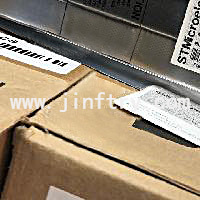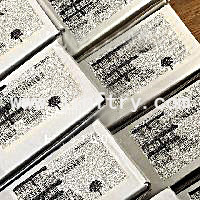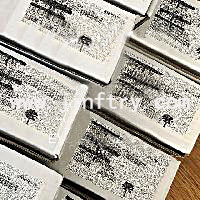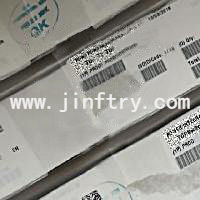Introduction to Motors and Motor Controllers
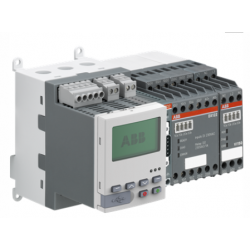
Introduction to Motors and Motor Controllers
The motor is the most basic component of the electromechanical system and the basis of robotics technology. Applications range from simple systems, such as vibration motors in mobile phones, to complex systems, such as robots on production lines.
Motor introduction
An electric motor is a device that converts electrical energy into mechanical energy. According to their working principles and structures, motors can be divided into two categories: DC motors and AC motors.
1. Direct current motor (DC): It uses a DC power source, such as a battery, to produce rotating mechanical motion through the cooperation of armature windings and commutators. DC motors have high flexibility in starting and speed regulation, so they are widely used in toys, household appliances, and some special industrial applications.
Shunt DC motor
Features: The armature winding and field winding are independently powered. Therefore, the armature or field current can be changed independently to achieve speed regulation.
Application: Mainly used in situations where large-scale and smooth speed regulation is required, such as textile machinery, printing machinery, elevators, etc.
Shunt-wound DC motor
Features: The armature winding and the field winding are connected in parallel. The current in the armature and field windings is the same when the motor is starting and running.
Application: Due to its large starting torque, it is mainly used in situations that require large starting torque, such as electric vehicles, cranes, electric fans, etc.
Series DC motor
Features: armature winding and field winding are connected in series. When the motor load changes, the current will change accordingly, thereby changing the motor's speed.
Application: Commonly used in places with high starting and braking requirements and large changes in load, such as power tools, vacuum cleaners, washing machines, etc.
Compound excited DC motor
Features: The armature winding and field winding have both parallel parts and series parts, which combine the characteristics of shunt and series excitation.
Application: Mainly used in situations where smooth speed regulation and large starting torque are required, such as electric furnaces, electric steel furnaces, large elevators, etc.
Permanent magnet DC motor
Features: No excitation current is required. The magnetic field generated in the armature interacts with the magnetic field generated by the permanent magnet to generate torque.
Application: Because of its simple structure, small size, light weight and high efficiency, it is widely used in household appliances, toys, power tools, electric vehicles, etc.
Introduction to Motor Control
Summarize:
There are many types of DC motors, each with its own characteristics and application scenarios. With the advancement of technology, some new DC motors have gradually appeared and been applied to more fields. The correct selection and application of DC motors is of great significance to improving equipment efficiency and performance.
2. Alternating current motor (AC): It is powered by an AC power source, such as a household socket. According to the working principle and structure, AC motors can be divided into synchronous motors and asynchronous motors. Among them, asynchronous motors are widely used in home appliances and industrial fields because of their simplicity, stability and low cost.
Synchronous motor:
Working principle: The rotor speed of the synchronous motor is synchronized with the grid frequency. When the motor is running, the rotor rotates synchronously with the magnetic field of the AC grid.
application:
Large refining and mining machines
High-power fans and water pumps
Generator at power station
Asynchronous motor (or induction motor):
Working principle: The rotor speed of the asynchronous motor is lower than the synchronous speed of the power grid. The working principle of an electric motor is based on the principle that when a conductor cuts magnetic field lines in an alternating magnetic field, a current is induced in the conductor.
application:
Household appliances such as refrigerators, washing machines, fans, etc.
Industrial equipment such as hoists, pumps, transmission belts, etc.
Commercial equipment such as air conditioners, elevators, etc.
Doubly-fed motor:
How it works: Both the rotor and stator of a doubly-fed machine are connected to the grid, so it is able to input or output power on both ends.
application:
wind power
variable speed drive
Brushless AC Motor (BLAC):
Working principle: Brushless AC motors use electronic commutators instead of traditional mechanical commutators to commutate electronically.
application:
computer hard drive
drone
High efficiency and high precision control applications
Brushed AC motor:
How it works: Brushed AC motors use a mechanical commutator for commutation to produce continuous rotation.
application:
Small household appliances such as electric shavers and toothbrushes
Tools such as electric drills and chainsaws
Intelligent motor management
The Universal Motor Control UMC100.3 is future-ready – and equipped to take your motor control to the next level. With outstanding ease of use, unrivalled communication, and simple configuration, the smooth running of your operations has never been so simple.
ABB’s intelligent motor controllers combine motor protection and control functions, fieldbus and Ethernet communication, and fault diagnosis in a single device. They provide detailed operational, diagnostic and service data continuously, giving any plant an effective data source for predictive maintenance systems.
Main benefits
• Reduced wiring time, space requirements and cost
• Fast replacement times mean less downtime
• Commissioning time savings
• Seamless integration into ABB AbilityTM System 800xA platform
• Choice of communication interfaces
• Safe motor shutdown
Main features
• Max 1000 V AC motor voltage
• Suitable for single- and three-phase motors
• Rated motor current from 0.24 to 63 A, without accessories
• Tripping classes 5, 10, 20, 30, 40 in accordance with EN/IEC 60947-4-1
• Flexible mounting of communication interfaces inside and outside drawers
• Standard fieldbus connection and wiring

Introduction to Motor Controllers
Motor controller is a device used to control the starting, stopping, speed and steering of motors. Motor controllers can be customized based on required functionality and applications. Key features include:
1. Start and stop control: Control the start and stop of the motor through a contactor or relay.
2. Speed control: For applications that require variable speed, such as power tools or electric vehicles, the motor controller can adjust the speed of the motor. Pulse width modulation (PWM) is commonly used for speed regulation of DC motors; speed regulation of AC motors can be achieved through frequency converters.
3. Direction control: The motor controller can change the direction of the motor, which is necessary in many applications, such as the forward and backward movement of electric vehicles.
4. Protection: When the motor is overloaded, overheated or other abnormal conditions occur, the motor controller can cut off the power supply in time to protect the safety of the motor and the user.
In many applications, motor controllers can also be used in conjunction with other systems, such as sensors or computers, to achieve more advanced and precise control functions.
Types of Motor Controllers
The motor controller is an important part of the motor control system. It can receive instructions from the host computer or operator, and then convert them into current or voltage that controls the operation of the motor, thereby controlling the starting, running, stopping, direction conversion, etc. of the motor. The following are some common types of motor controllers:
DC motor controller: used to control DC motors. The speed and direction of the DC motor can be adjusted by adjusting the power supply voltage or current. Common DC motor control methods include PWM speed regulation, transformer speed regulation and resistor speed regulation.
AC motor controller: used to control AC motors. For AC motors, the control method is more complex because the speed and direction of the AC motor are closely related to the frequency and phase of the power supply. Common AC motor control methods include V/f control, vector control, etc.
Stepper Motor Controller: A stepper motor is a motor that can precisely control the angle of rotation. The stepper motor controller can send pulse signals to control the stepper motor to rotate according to the specified number of steps, direction and speed.
Servo Motor Controller: A servo motor is a high-performance, high-precision motor commonly used in applications that require precise position control. The servo motor controller can monitor the position and speed of the motor in real time, and then control the motor through complex algorithms to ensure that it accurately reaches the preset position and speed.
Brushless DC Motor Controller (BLDC Controller): A brushless DC motor is a DC motor without carbon brushes and therefore has a longer service life and higher efficiency. BLDC controllers typically use electronic commutation to control the rotation of the motor, rather than relying on mechanical commutation.
Frequency converter: It is a device that can change the frequency of the power supply and is often used for speed control of AC motors. By changing the frequency of the power supply, the speed of the AC motor can be changed.
Soft starter: used to start AC motors gradually, thereby reducing current shock and mechanical shock during startup.
Motor controller applications
Motor controllers play a vital role in modern industry, transportation, and daily life. Whether in automation equipment on production lines, household appliances, or in various transportation vehicles, motor controllers are an indispensable part. The main applications of motor controllers are briefly described below:
automated industry
Robotic arm: The robotic arm requires precise position and speed control to perform tasks. The motor controller can ensure that the robotic arm reaches the designated position quickly and accurately.
Production line conveyor belt: The speed is controlled by the motor controller to ensure production efficiency and product quality.
Transportation
Electric Vehicles: Modern electric vehicles rely on advanced motor controllers to manage the motor's power output to provide a smooth, efficient drive.
Drones: The motors of unmanned aircraft require precise control to ensure stable flight and precise navigation.
household appliances
Washing machine: The motor controller controls the speed of the motor according to the washing program to ensure that the clothes are properly washed.
Air conditioning: The motor controller adjusts the speed of the fan to ensure that the indoor temperature is maintained at the set value.
medical equipment
MRI scanner: uses a motor controller to precisely adjust the movement of its components to obtain high-quality images.
Surgical robots: require highly precise motor control to perform complex surgical operations.
entertainment industry
Drone Photography: The motor controller in the drone ensures stable flight for clear videos and photos.
Electronic toys: Many modern electronic toys, such as remote control cars, robots, etc., require motor controllers to perform various actions.
Renewable Energy
Wind turbine: A motor controller adjusts the angle of the blades to maximize energy output.
The above is just the tip of the iceberg for motor controller applications. With the development of technology, motor controllers will play an important role in more fields. Especially in the Internet of Things, autonomous vehicles and advanced automation systems, motor controllers will play a vital role.
edit author:
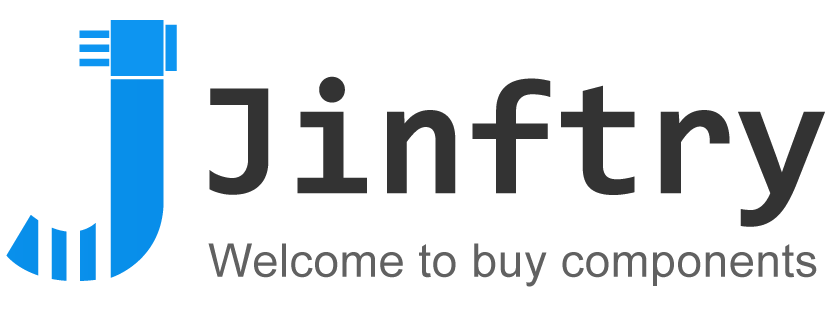 (Hong Kong registered company name: Jing Fu Cai (Hong Kong) International Co., Ltd.) is an electronic parts distributor that provides a wide range of electronic products and saves you a lot of time, energy and costs through efficient services. Carefully prepared orders Fast delivery service.
(Hong Kong registered company name: Jing Fu Cai (Hong Kong) International Co., Ltd.) is an electronic parts distributor that provides a wide range of electronic products and saves you a lot of time, energy and costs through efficient services. Carefully prepared orders Fast delivery service.

